When Kids Hide Apps
Finding the hidden Instagram and understanding why children hide apps
DEC 08, 2021
When Kids Hide Apps
Finding the hidden Instagram and understanding why children hide apps
Social media has emerged as a typical feature of the modern digital landscape. Instagram is widely accessed by this age group, with 22M teens posting and scrolling for hours each day (Wells, 2021). Reports indicate that “72% of teens use Instagram daily, [which] is a significant increase from 52% in 2015” (Hunnicutt, 2020). The increased time spent on social media directly reflects the growing access minors now have.
Why is social media more accessible, even when platforms like Instagram require users to be at least 13 years old (Instagram)? In 2015, 41% of children by age 12 had a smartphone, which grew to 69% in 2019 (Rideout, 2019). Parents who have already limited or restricted their child’s access to social media may feel confident that they’ve protected their child. But your child’s phone may have hidden access to multiple platforms despite your efforts.
Why Children Create a Hidden Instagram
Before you intervene, it’s helpful to understand the motives behind their rogue behavior. Why do children decide to hide a social media account? What need are they trying to fill? The desire to fit in can cause kids to succumb to peer pressure, and in the digital age, this manifests in having access to social platforms, often regardless of family rules.
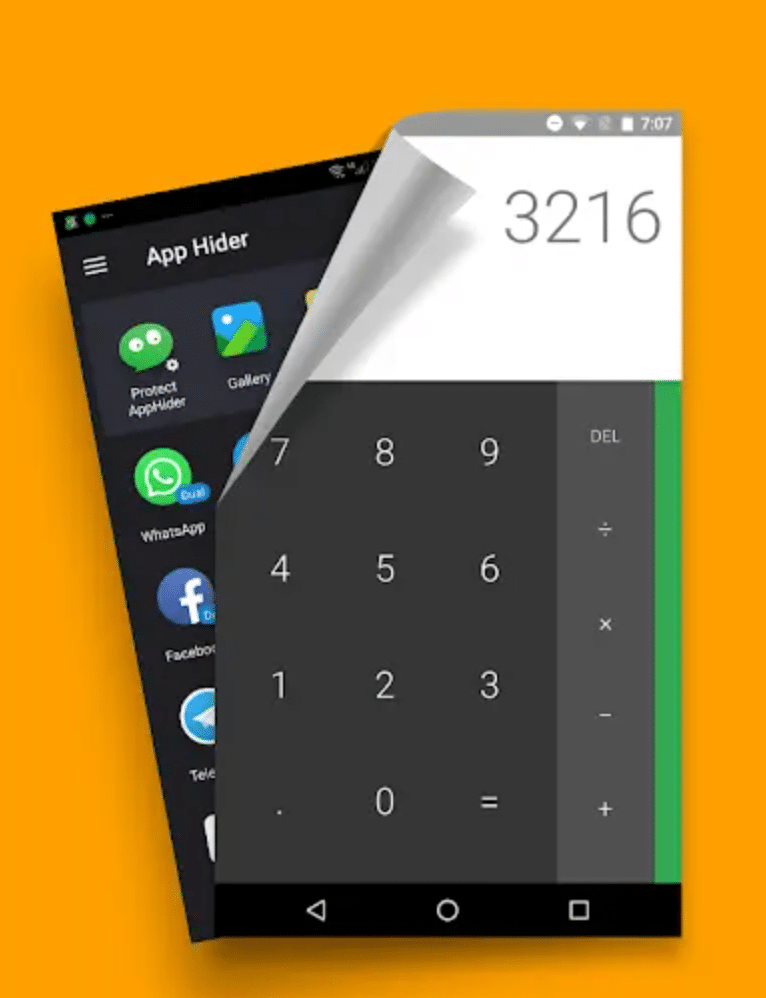
Social inclusion is an important “determinant of health”—without inclusion, people are more likely to experience poor health (including poor mental health), loneliness, isolation, and poor self-esteem.
—Community Living NB
The Social Connector & Identity Builder
Social media provides a way for kids to connect with their friend group as well as the avenue to establish their identity. With its ability to avoid the possibility of blatant, in-person rejection, the opportunity to put oneself out there for social feedback is practically irresistible. The academic report, “Peer Influence Via Instagram: Effects on Brain and Behavior in Adolescence and Young Adulthood,” determined that “[likes] provide an opportunity for… social comparison with peers to determine appropriate social behavior” (Sherman, Lauren E., et al., 2018, p.6). Individuals may feel that they cannot keep up with popular trends or be dialed into their social circle without access. Adolescents will go to great lengths to pursue a connection and show the world who they are.

A Child’s Self-Expression
Social media can also be a fun form of self-expression. With complete control over the way their peers see them, young people can present themselves in any manner they like. The International Journal of Multicultural and Multireligious Understanding comments, “[the] virtual world looks real … includ[ing] the development of social media such as Instagram,” which allows “teens [to] take advantage of such conditions to have a different identity.” This attempt serves as a fake solution to “teenage problems regarding the absence of self-confidence and social realities in the real world” (Tanti, 2021). When children use a secret Instagram account, it suggests an underlying problem. Don’t hesitate to patiently ask your child why they want an Instagram account and discuss how they can fill that social desire safely.
The Risk of Social Media for Children Can Be Deadly
The Wall Street Journal published a scathing rebuke of Instagram (which is owned by Facebook) when they uncovered the social media giant’s internal research which indicated that the app harms a sizeable portion of its users, especially teenage girls (Wells, Horowitz, Seetharaman, 2021). They report that since 2019 Facebook has known, ‘”We make body image issues worse for one in three teen girls,”‘ and “Among teens who reported suicidal thoughts, 13% of British users and 6% of American users traced the desire to kill themselves to Instagram” (Wells, Horowitz, Seetharaman, 2021).
A study conducted in 2018 analyzed the effect of Instagram on both the brain and behavior of adolescents and young adults. It proved that high school students’ brains are negatively affected when using an unfiltered Instagram account due to their impulsive and hive-like reactions towards popular and well ‘liked’ photographs (Sherman, 2018, p.43).

Upon viewing a photo that had received a lot of social proof for its trendy status, the brain’s reward circuitry began to be activated. This means that looking at any person’s popular photos makes teenagers feel validated and accomplished. Additionally, findings suggest that teenagers are more likely to respond to a photograph that has more ‘likes’ simply because the picture has been deemed popular. This creates a desire to surround themselves with whatever is trendy—a craving heightened by the like count of their own photos (Sherman, 2018, p.43).
When high school students viewed images depicting risk taking, the area of the brain that registers consequences and cognitive control showed a decrease in activation.
—Lauren E. Sherman, a Ph.D. student in developmental psychology at the University of California and researcher at the Children’s Digital Media Center
Likes Can Lead to Risky Behavior in Teens
Having a hidden Instagram account gives adolescents access to posts that can motivate them to take risks. According to researchers, liking a photo depends heavily on whether it is deemed popular by peers or followers. This cycle becomes dangerous very quickly. When high school students viewed images depicting risk-taking, the area of the brain that registers consequences and cognitive control showed decreased activity. In other words, the more popular a post is, the harder it is for teens to recognize risky behavior and its consequences (Sherman, 2018, p.43).
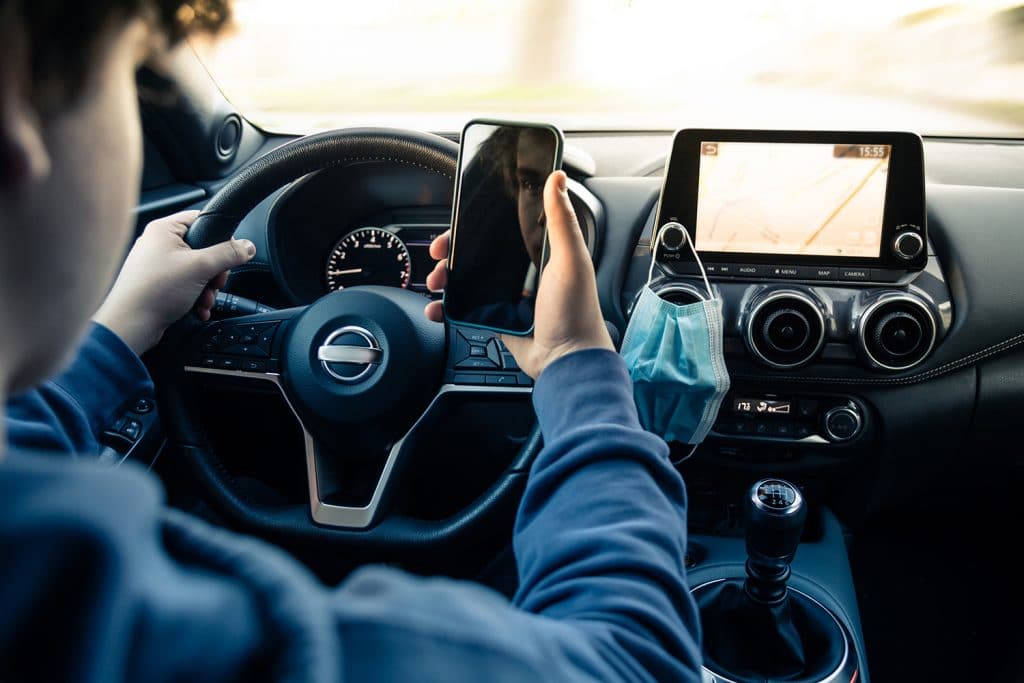
Unfiltered, hidden Instagram accounts expose children to an abundance of influence from peers who do not understand the consequences of their actions. It’s a case of the unfortunate being led by the clueless.
Hidden Instagram: Rinsta vs. Finsta
Let’s say your teenager has an Instagram account that you know about and actively follow to ensure that their feed is not harmful to them. Are you in the clear? Not necessarily.
As much as parents want to keep their children safe, it is important to recognize that teens are savvier regarding social media. Understand potential anonymity loopholes in social media for a better picture of your teen’s digital world. For example, although you may be aware of your teenager’s Rinsta (real Instagram), you may not be privy to their Finsta (fake Instagram) (McGregor et al., 2019).
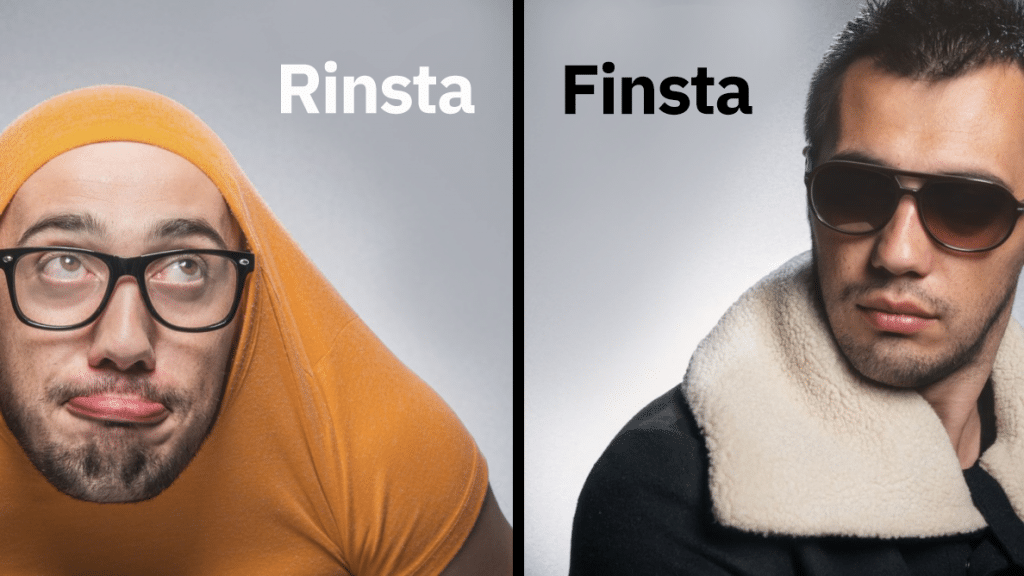
Rinsta = Real Instagram
These are the accounts of which parents are most likely aware. A Rinsta account is typically public and carefully curated by the creator. The traditional nature of this account strongly resembles a Facebook account; users typically allow friends, family, and acquaintances to follow them (McGregor et al., 2019). Generally, it is used to keep followers updated on the often-staged lavish life of the user. Many children do not keep these accounts private, which is problematic regarding privacy and safety.
Finsta = Fake or Hidden Instagram
A Finsta account is the private story or close friends list of Instagram accounts. “Finsta accounts are subsidiary Instagram accounts with highly selected audiences where owners can post material that is not associated with their main account” (McGregor et al., 2019). If your child only allows select people to follow them on Rinsta, they may have something they don’t want all of their followers to see.
Finsta accounts serve as an outlet for teens to play with their self-expression in a controlled space. The domain often encourages gossip, exhibitionism, risk-taking, and other attention-seeking behaviors not seen on primary accounts (McGregor et al., 2019). Therefore, a Finsta account is a carefully crafted, hidden hub for reckless teenage behavior. Finstas typically use pseudonyms as their account names, making them harder to find than Rinstas.
However, stay hopeful. Although it may take time, it is possible to locate Rinsta and Finsta accounts. Consider asking your child directly. You may be surprised that they will be forthright. Asking will also provide an opportunity to observe their response and most definitely begin a dialogue.
Conversations, Not Confrontations
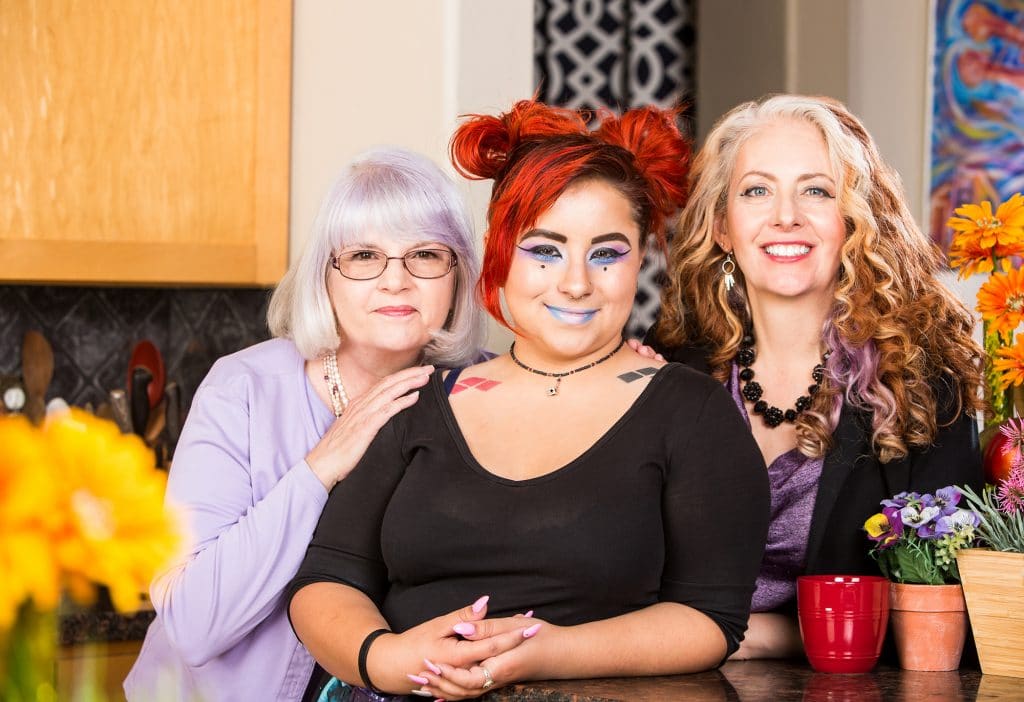
Establishing an understanding between you and your child about their device will enable you to have difficult conversations. Before children take possession of their new phone, discuss the level of access you plan on having. Clarify your expectation that they use their phone safely and responsibly. Disclose that you will be checking apps and features regularly. Share with your kids that your desire and responsibility is not to police their activity but to protect them. You can explain that you are fully committed to being tech-savvy because you love them.
Ask for your child’s input and set boundaries together. Communication expert and author Stephen R. Covey shared, “If I were to summarize in one sentence the single most important principle I have learned in the field of interpersonal relations, it would be this: Seek first to understand, then to be understood” (Covey, D. S. R., 2020). Taking the time to address your child’s concerns about your access will provide you with insight and bring the two of you closer together.
Depending on your circumstances, you may choose to follow all your child’s social media accounts as well as their friends’ accounts. You may even feel the necessity to create an anonymous account to follow them. In the next section, we provide a guide to delving deeper into your child’s phone, not with the intent to breach their trust, but rather to connect with them as you protect them. You will be the best judge of finding the balance between safeguarding your child and honoring their privacy.
Searching for the Hidden Instagram
In “Hiding in Plain Sight: The Trouble with Hidden Apps” (Zapal, 2021), parents are guided through the process of finding these hidden accounts. Many young phone owners download vaults and app hiders to conceal apps from their guardians. Here are some strategies to uncover these digital hideouts.
Recognize evasive behavior
- When you enter a room, does your child hide their screen or turn off their device suddenly?
- Does your teen resist sharing passwords or allowing you to look through their phone?
- Have you noticed multiple apps of the same type, like two calculators, installed on their phone? (Zapal, 2021)
Common app hiders and vaults
The following list of hidden apps and vaults is not exhaustive, as the apps are often only available for a short time, and new ones are added daily (Zapal, 2021). Parents are encouraged to search for these cloaks regularly. Furthermore, in the app store on a child’s phone, search using keywords such as vault app, hidden app, and secret app. Be creative in your search; your child is savvy.
- AppLock
- Vault
- Vaulty
- SpyCalc
- Hide It Pro
- CoverMe
- Secret Photo Vault
- Secret Calculator
- Calculator Photo Vault
Create your own profile on every platform your child uses with full disclosure. Doing so will allow you to search for their accounts and become a follower or an observer. Consider following your child’s friends’ accounts as well.
Search by name
- Begin by typing your child’s name into the search bar.
- Include possible nicknames your child may have used.
Survey their friends’ accounts
- Search for one of their close friend’s accounts, then go through both the followers and those following it. Keep an eye out for an account that could be your child’s. (How to Find Hidden Profiles, 2021)
- Open Instagram on their phone.
- Take a look at the app on their phone. Click on their name, and if they are signed in, any other accounts will be listed below. If they are not signed into their account, you will need them to log in or no other accounts will appear.
- Of note, each unique Instagram account requires a separate email address to create it.
Next Steps
Let compassion be your guide as you engage in ongoing conversations about honesty and safety with your child. Consider the following principles:
- If you have discovered your child has a hidden profile, avoid the tendency to be hard on yourself for having known. Your energy will be better spent moving forward.
- Recognize that adolescence is a time where human beings push boundaries. It is developmentally appropriate, though not without consequences.
- Be glad that you found the secret when you did. Look at the discovery as an opportunity to have a meaningful, compassionate discussion. You may find the following conversation ideas helpful:
Talking to your child about social media:
- Do you have more than one social media account? Why? Let’s look at them together.
- Help me understand why you decided to have a secret account. How did hiding it make you feel?
- What do you imagine I want for you? I love you, and I want to keep you safe. I want to give you the best chance for success and happiness.
- I’m always going to try to protect you. What are some ways you can think of to protect yourself?
- Moving forward, let’s continue talking about your social media use and healthy boundaries.
Your teenager may not appreciate these boundaries now, but eventually, they will be grateful they were given time to develop a confident identity safe from the unhealthy pressures of social media.
If you want to avoid the risk of hidden apps and social media altogether, check out Gabb’s internet-free kids’ phones and watches.
Did we miss anything? Let us know in the comments!











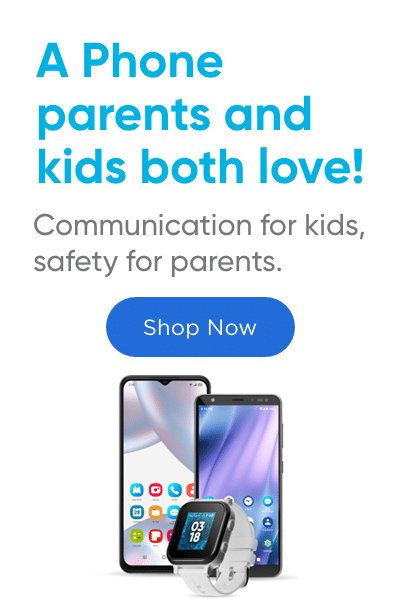
StoriesIG on Jun 24, 2023 01:00 AM
Great tips on finding a child's hidden Instagram account! As a parent, it's important to stay aware of our children's online activity and this article provides useful insights on how to do just that. Thank you for sharing these helpful tips. - Alex Cool. https://storiesig4k.io/
Gabb on Jun 26, 2023 02:13 PM
We are glad to hear that you found this helpful! Thanks for sharing!